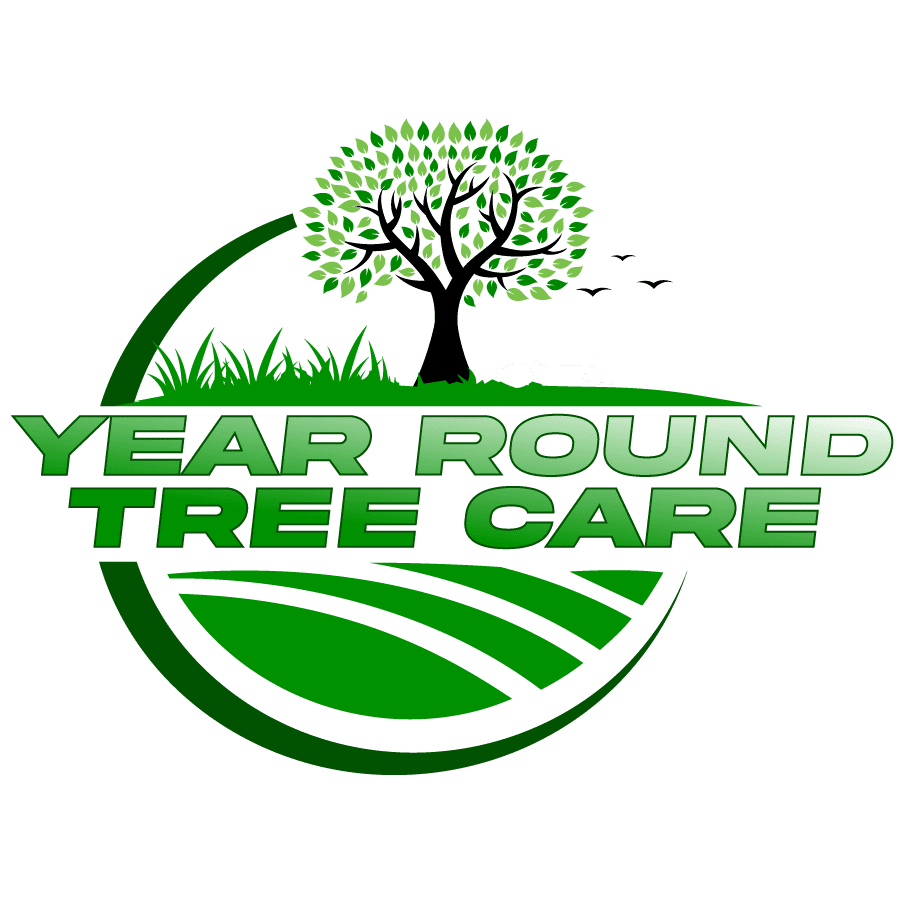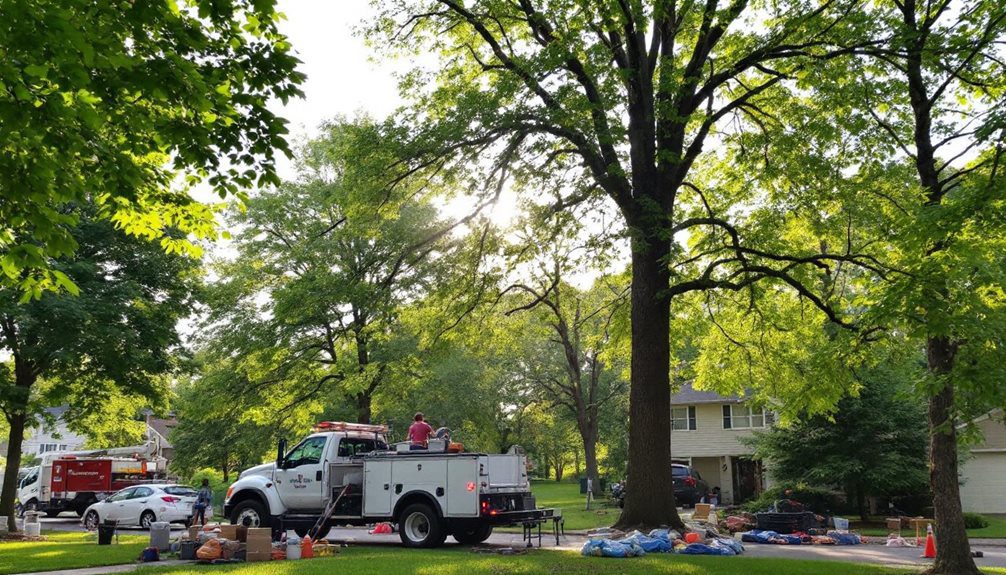Common Tree Diseases in the Twin Cities
Protecting Your Urban Forest from Disease and Pests
The Twin Cities metropolitan area boasts a diverse urban forest that enhances our neighborhoods, provides cooling shade, and contributes to our quality of life. However, our trees face numerous threats from diseases and invasive pests. Understanding these challenges is the first step in protecting our valuable tree canopy. This guide will help you identify, prevent, and manage the most common tree diseases affecting the Minneapolis-St. Paul area.
The Big Three: Major Threats to Twin Cities Trees
1. Dutch Elm Disease (DED)
The Silent Killer of American Elms
Dutch Elm Disease has devastated elm populations across North America since its arrival in the 1930s. The Twin Cities, once home to magnificent elm-lined boulevards, has lost millions of trees to this fungal disease.
What to Look For:
- Yellowing and wilting of leaves on individual branches (flagging)
- Brown streaking in the wood beneath the bark
- Rapid decline, often killing trees within 1-2 years
- Symptoms typically appear in early summer
How It Spreads:
- Native and European elm bark beetles carry fungal spores from infected to healthy trees
- Root grafts between nearby elms allow underground transmission
- Contaminated pruning tools can spread the disease
Management Strategies:
- Prevention: Annual fungicide injections (propiconazole) for high-value elms
- Sanitation: Prompt removal of infected trees and proper disposal
- Timing: Avoid pruning elms from April through July when beetles are active
- Diversity: Plant disease-resistant elm varieties like ‘Accolade’ or ‘Triumph’
2. Oak Wilt
A Lethal Disease Threatening Our Oak Heritage
Oak wilt is one of the most serious tree diseases in the eastern United States, and it’s particularly devastating to red oaks in Minnesota. The disease can kill a mature red oak in just a few weeks.
What to Look For:
- Red Oaks: Rapid leaf discoloration from top down, leaves turn bronze or brown but remain attached
- White Oaks: Slower decline, scattered branch dieback over several years
- Leaves drop while still partially green
- Dark streaking in the sapwood
How It Spreads:
- Sap beetles attracted to fresh wounds carry spores (April-July)
- Root grafts between oaks allow underground spread
- Creates infection pockets that expand outward annually
Management Strategies:
- Prevention: Never prune oaks from April through July
- Trenching: Sever root connections to stop underground spread
- Injection: Propiconazole treatments can protect high-value oaks
- Immediate Action: Remove infected red oaks promptly to prevent beetle transmission
3. Emerald Ash Borer (EAB)
The Invasive Insect Decimating Ash Trees
First detected in Minnesota in 2009, the Emerald Ash Borer has spread rapidly throughout the Twin Cities. This metallic green beetle from Asia has killed millions of ash trees across North America.
What to Look For:
- D-shaped exit holes (1/8 inch) in the bark
- S-shaped larval galleries under the bark
- Increased woodpecker activity
- Crown dieback starting at the top
- Epicormic shoots (water sprouts) on trunk and branches
- Vertical bark splits
Life Cycle and Spread:
- Adult beetles emerge May-August
- Females lay eggs in bark crevices
- Larvae feed under bark, disrupting nutrient flow
- Typically kills trees within 3-5 years of infestation
Management Strategies:
- Chemical Treatment: Imidacloprid or emamectin benzoate injections
- Treatment Timing: Most effective when tree shows <30% crown dieback
- Cost-Benefit Analysis: Treatment costs vs. removal and replacement
- Replacement Options: Diversify with non-ash species
Other Common Diseases Affecting Twin Cities Trees
4. Apple Scab
A Persistent Problem for Crabapples
Apple scab is the most common disease affecting crabapples and apples in our region, caused by the fungus Venturia inaequalis.
Symptoms:
- Olive-green to black spots on leaves
- Premature leaf drop by mid-summer
- Scabby lesions on fruit
- Reduced tree vigor over time
Management:
- Plant resistant varieties (‘Prairifire’, ‘Sugar Tyme’, ‘Adirondack’)
- Rake and destroy fallen leaves
- Apply fungicides during spring (for susceptible varieties)
- Improve air circulation through proper pruning
5. Anthracnose
The Wet Weather Disease
Anthracnose encompasses several fungal diseases that thrive in cool, wet spring weather. It affects many shade trees including ash, oak, maple, and sycamore.
Symptoms:
- Brown, irregular dead areas on leaves
- Leaf curl and distortion
- Early leaf drop
- Twig dieback in severe cases
Management:
- Usually not life-threatening; trees recover with dry weather
- Rake and destroy infected leaves
- Prune dead twigs to improve air circulation
- Fungicides rarely necessary except for high-value trees
6. Diplodia Tip Blight
A Stress-Related Disease of Pines
Diplodia tip blight primarily affects stressed Austrian, Scots, and Ponderosa pines, particularly those over 20 years old.
Symptoms:
- Brown, stunted new shoots with retained needles
- Resin droplets on shoot tips
- Black fruiting bodies on needles and cones
- Lower branch dieback progressing upward
Management:
- Reduce stress through proper watering and mulching
- Prune infected branches during dry weather
- Remove fallen cones and needles
- Consider replacing severely affected trees with resistant species
Additional Diseases to Watch
Bur Oak Blight
A relatively new disease in Minnesota that causes late-summer leaf browning and premature defoliation. Management includes fungicide injections for valuable specimens.
Fire Blight
Affects apples, crabapples, and other members of the rose family. Causes branch tips to appear burned. Prune infected branches 8-12 inches below visible symptoms.
Rhizosphaera Needle Cast
Common on blue spruce, causing needle loss from the bottom up. Plant resistant varieties and improve air circulation.
Integrated Disease Management Strategies
1. Right Tree, Right Place
- Choose disease-resistant varieties
- Match trees to site conditions
- Avoid monocultures in landscapes
2. Cultural Practices
- Proper Watering: Deep, infrequent watering encourages deep roots
- Mulching: 2-4 inches of organic mulch (keep away from trunk)
- Pruning: Remove dead/diseased wood; improve air circulation
- Fertilization: Based on soil tests; avoid over-fertilization
3. Early Detection
- Regular monitoring during growing season
- Learn to identify early symptoms
- Consult certified arborists for diagnosis
- Join community tree watch programs
4. Sanitation
- Clean pruning tools between cuts (10% bleach solution)
- Remove and properly dispose of infected material
- Don’t transport firewood (spreads pests and diseases)
When to Call a Professional
Contact a certified arborist when:
- You’re unsure about disease identification
- Tree shows significant decline (>30% crown dieback)
- Disease requires injection treatments
- Large trees need pruning or removal
- You need a management plan for multiple trees
Community Action and Resources
Local Resources:
- University of Minnesota Extension: Diagnostic services and fact sheets
- Minnesota Department of Agriculture: EAB information and quarantine updates
- City Forestry Departments: Tree care guidance and permits
- Twin Cities Tree Trust: Community forestry programs
What You Can Do:
- Learn: Attend workshops on tree care and disease identification
- Monitor: Report suspected EAB or oak wilt to city foresters
- Diversify: When planting, choose a variety of species
- Advocate: Support community forestry initiatives and funding
Looking Forward: Building a Resilient Urban Forest
The challenges facing our urban trees are significant, but not insurmountable. By working together—homeowners, communities, and forestry professionals—we can:
- Preserve our remaining elms and oaks through preventive care
- Slow the spread of invasive pests like EAB
- Plant diverse, climate-adapted species for the future
- Create resilient urban forests that can withstand new challenges
Remember, healthy trees are more resistant to diseases and pests. Investing in proper tree care today protects our urban forest for future generations.
Conclusion
Tree diseases and pests are an ongoing challenge in the Twin Cities, but with knowledge, vigilance, and proper care, we can minimize their impact. Whether you’re managing a single backyard tree or advocating for community forestry, your actions matter. By understanding these common diseases, implementing preventive measures, and seeking help when needed, we can maintain the health and beauty of our urban forest.
The trees we save and plant today will provide shade, clean air, and natural beauty for decades to come. Let’s work together to ensure the Twin Cities remains a thriving, tree-filled place to live.
For more information on tree diseases and care in the Twin Cities, visit the University of Minnesota Extension website or contact your local city forester. Remember: when in doubt, consult with a certified arborist to ensure the best care for your trees.

